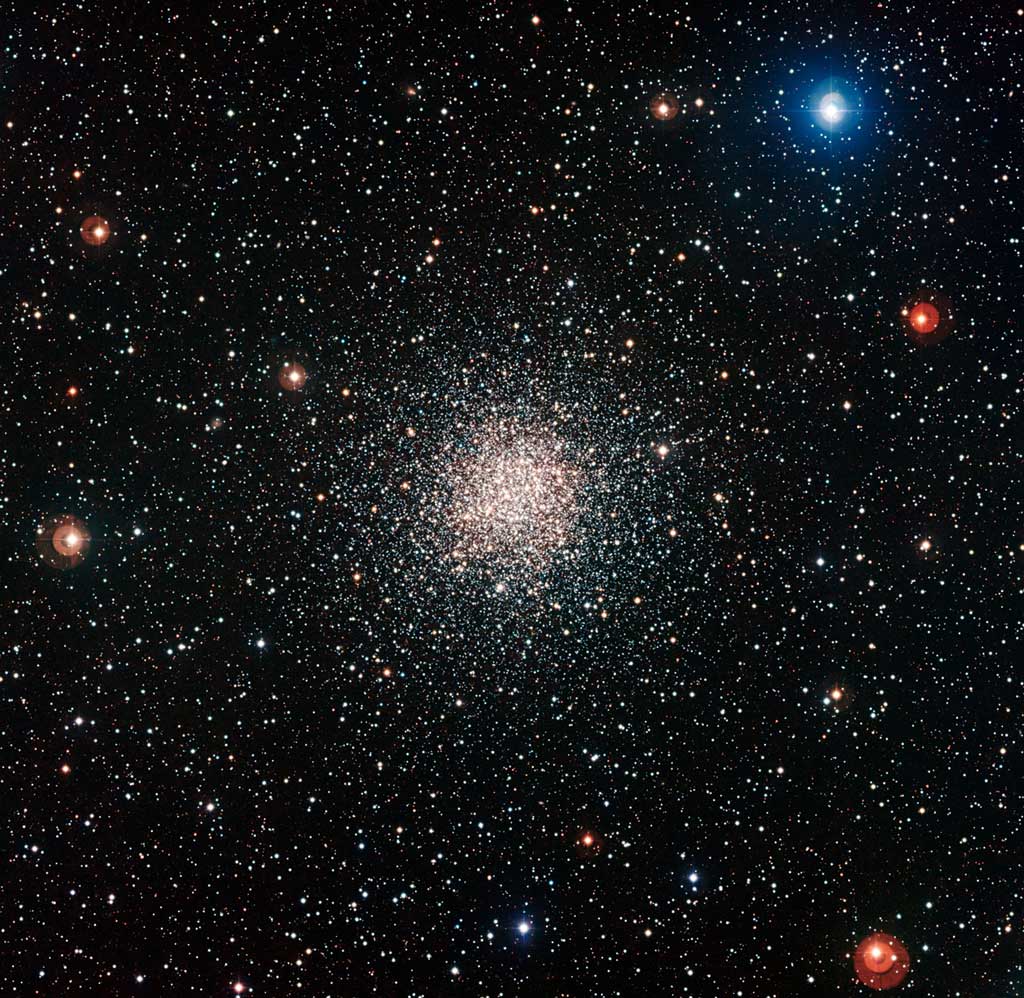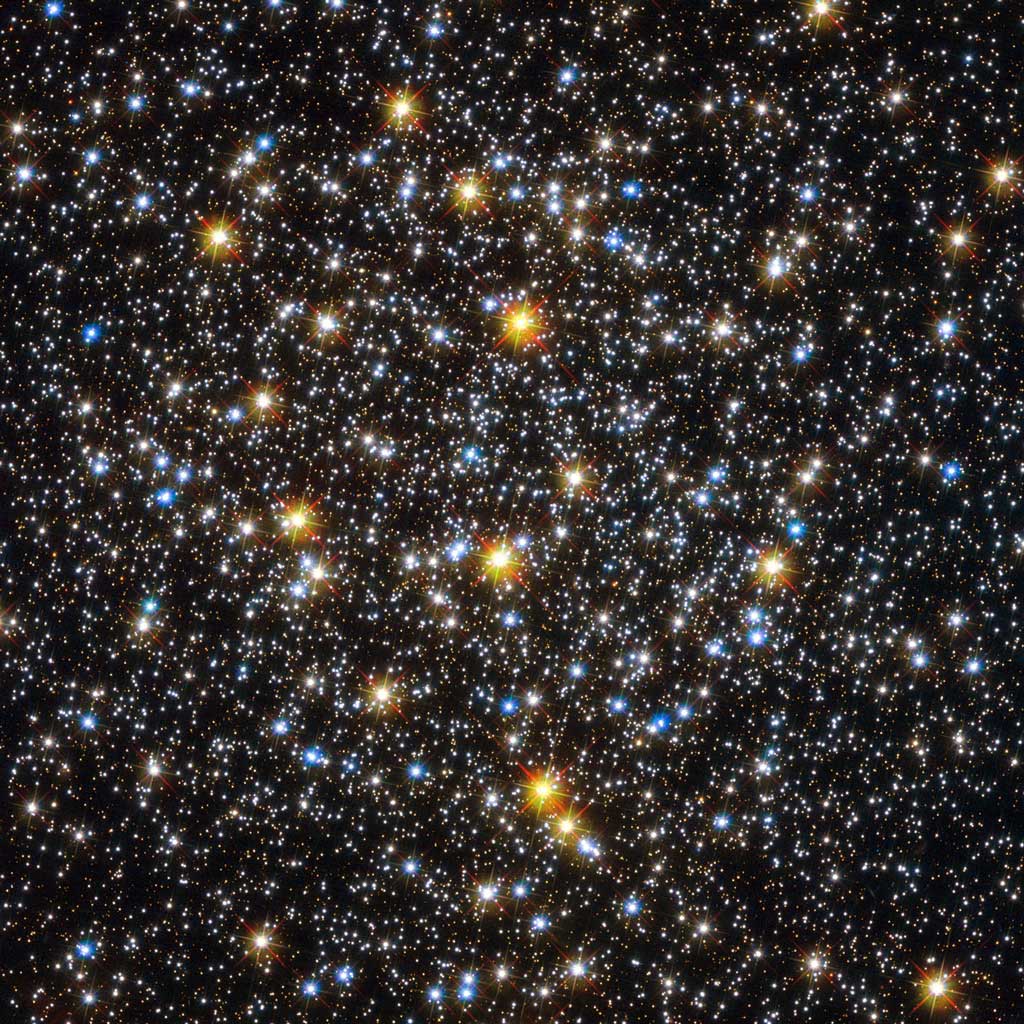Globular star clusters are among the oldest objects in the universe, and NGC 6362 cannot hide its age in this picture. The many yellowish stars in the cluster have already run through much of their lives and became red giant stars. But globular clusters are not static relics from the past — some curious stellar activities are still going on in these dense star cities.
For instance, NGC 6362 is home to many blue stragglers — old stars that really do succeed in passing for a younger age. All of the stars in a globular cluster formed from the same material at roughly the same time — typically about 10 billion years ago for most globulars. Yet blue stragglers are bluer and more luminous, and hence more massive, than they should be after 10 billion years of stellar evolution. Blue stars are hot and consume their fuel quickly, so if these stars had formed about 10 billion years ago, then they should have fizzled out long ago. How did they survive?
Although less well-known than some brighter globular clusters, NGC 6362 holds much that is of interest to astronomers and has been well studied over the years. It was selected as one of the 160 stellar fields for the Pre-FLAMES Survey — a preliminary survey conducted between 1999 and 2002 using the 2.2-meter telescope at La Silla to find suitable stars for follow-up observations with the Very Large Telescope’s spectroscopic instrument FLAMES. The picture here comes from data collected as part of this survey.
The new image shows the entire cluster against a rich background of the carpet of stars in the Milky Way. The NASA/ESA Hubble Space Telescope has also studied in detail the central parts of NGC 6362. The Hubble view shows a much smaller area of sky in much greater detail. The two views — one wide-angle and one zoomed in — complement each other perfectly.
This brilliant ball of stars lies in the southern constellation Ara the Altar. It can be easily seen in a small telescope. It was first spotted in 1826 by the Scottish astronomer James Dunlop using a 22-centimeter telescope in Australia.











